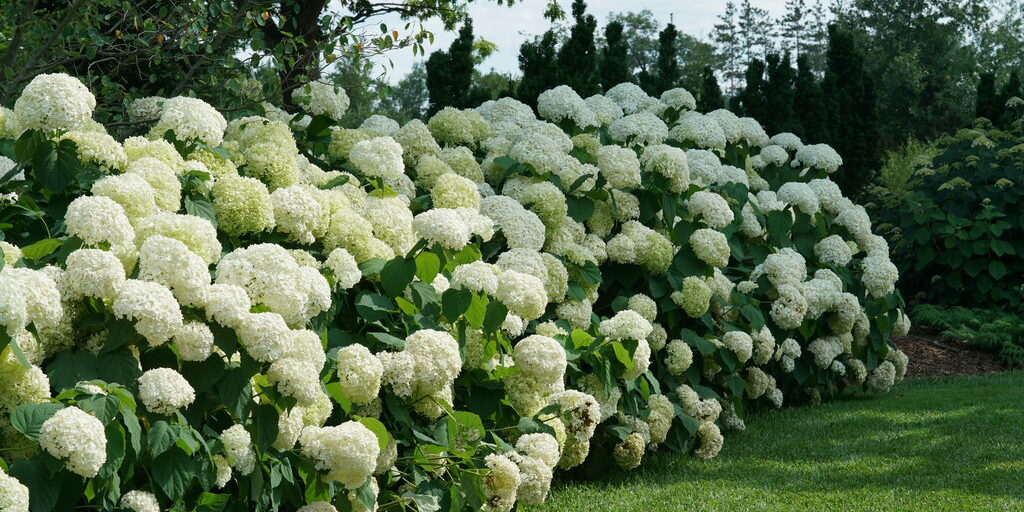What to Know for Beautiful Blooms
Hydrangeas are beloved for their show-stopping blooms, rich textures, and seasonal color changes. But caring for them successfully requires a bit of strategy — especially when it comes to pruning and placement. Here’s a detailed guide to the three main hydrangea types you’ll find in northern Minnesota, how to care for each, and how to keep them blooming year after year.
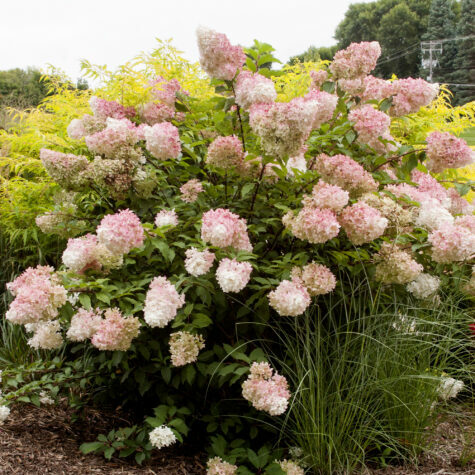
Panicle Hydrangea (Hydrangea paniculata)
Bloom Time: Mid to late summer
Flower Color: Starts white and gradually turns pink as the blooms age
Pruning: Panicle hydrangeas bloom on new wood, meaning they produce flower buds on growth that appears during the current season. You can safely prune them back in late fall, winter, or early spring. Use a heading cut — trim stems just above a visible fat bud — to encourage new growth and fuller blooms. Don’t worry about cutting them too hard; they’re very forgiving!
Sun Needs: Panicle hydrangeas are the most sun-tolerant variety. In northern climates like ours, they can handle full sun all day. That extra light helps produce more abundant and vibrant blooms.
These varieties are often the last hydrangeas to bloom, bringing color into mid and late summer. Their showy, conical shaped flower heads start out white and gradually fade to soft pinks, adding dynamic beauty to your landscape.
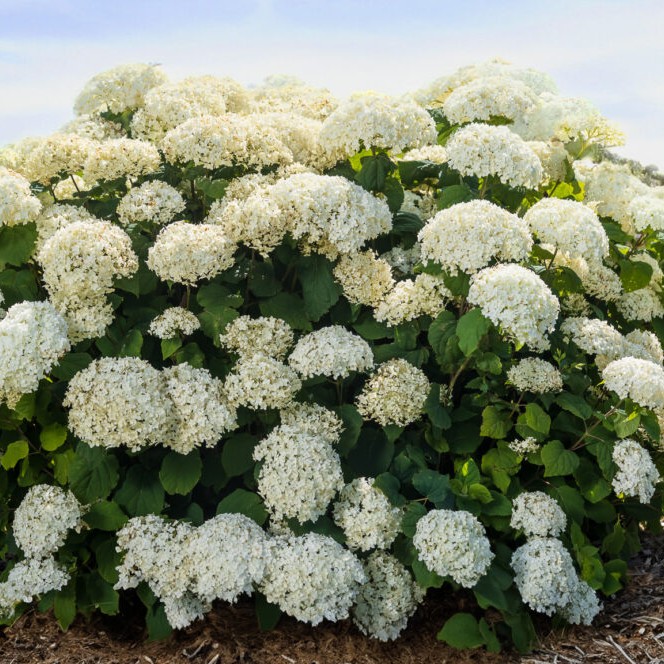
Smooth Hydrangea (Hydrangea arborescens)
Bloom Time: June through September
Flower Color: Typically white or creamy white
Leaves: Smooth hydrangeas have rounded, matte-finished, slightly heart-shaped leaves that give the plant a soft, natural texture. They’re a great choice for a more relaxed or cottage-style garden.
Pruning: These hydrangeas bloom on new wood. Once the plant is established (after a few growing seasons), you can prune it all the way down to the ground in early spring to promote vigorous growth and compact form. Alternatively, if you prefer a larger shrub, skip pruning altogether — it’ll still bloom beautifully.
Native Bonus: Smooth hydrangeas are native to the eastern and southern U.S., making them well-adapted to our local conditions and a great choice for pollinator-friendly or native plant gardens.
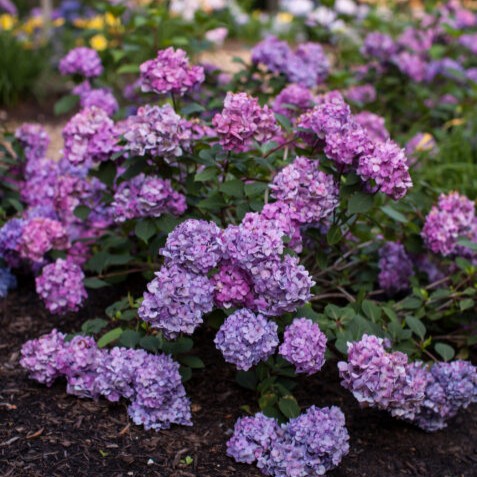
Bigleaf Hydrangea (Hydrangea macrophylla)
Bloom Time: Midsummer
Flower Color: Blue, pink, purple, white, or mixed — the color depends on soil pH
Leaves: Bigleaf hydrangeas are easily identified by their large, glossy, serrated leaves. These lush leaves help the plant hold its form and stand out even when it’s not blooming.
Pruning: Unlike the others, bigleaf hydrangeas bloom mostly on old wood — the stems that formed last season. Buds develop in late summer to early fall, so avoid pruning after blooming ends and before the following August. If you must cut back, prune selectively to maintain the shape taking out the oldest stems from the base. Be aware this may reduce the amount of blooms next year!
Hydrangea Trees
Hydrangeas trained into tree form require a little extra shaping. After blooming, prune off any suckers — those skinny shoots at the base — to maintain a tidy trunk. If the canopy looks sparse in the center, thinning out some branches helps promote airflow and fullness. In fall, feel free to prune more aggressively to shape the overall form and follow up with a balanced fertilizer.
General Hydrangea Care Tips
Soil: Hydrangeas love moist but well-drained soil. Soggy conditions — often called “wet feet” — can quickly lead to root rot and stress. Good drainage is non-negotiable for healthy plants.
Watering: Hydrangeas have shallow root systems and dry out faster than many other shrubs, especially after transplanting. Even if it rained yesterday, your hydrangea might still be thirsty today. Make sure to water deeply and consistently — especially during hot spells.
Mulch: A 2–3″ layer of shredded bark mulch helps retain soil moisture, keeps roots cool, and reduces weed competition. Plus, it adds a clean, finished look to your beds.
Sun: While many think of hydrangeas as shade plants, they actually bloom best with at least four hours of morning sun. Afternoon shade helps protect delicate blooms during the hottest part of the day.
Don’t Prune to Control Height
One of the most common mistakes with hydrangeas is trying to keep them short by frequent pruning. Unfortunately, this doesn’t work — pruning actually encourages new growth, which means your plant could end up even taller than before! Worse, you might accidentally remove developing flower buds. If your hydrangea is outgrowing its space, move it in early spring while it’s still dormant. Choose a compact variety better suited to smaller spots.
Color Magic – Just for Bigleaf Hydrangeas
Want to change your hydrangea’s color? Only bigleaf hydrangeas respond to soil pH. Acidic soils (pH below 5.5) turn blooms blue, while alkaline soils (above 6.5) produce pink. If your soil is neutral, expect purple or even mixed-color flowers. Use aluminum sulfate to lower soil pH or garden lime to raise it — and be patient, color changes take time!
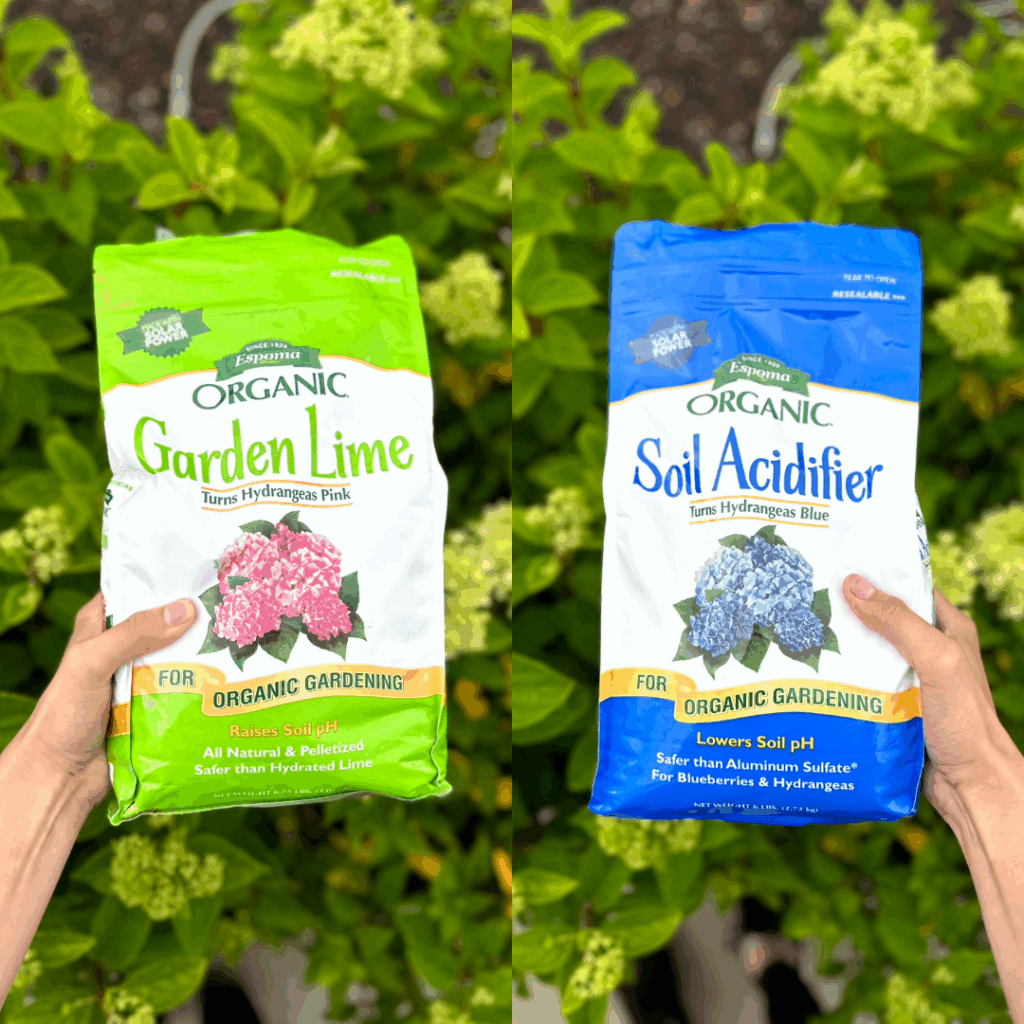
Cut Flower Bonus
Hydrangeas are not only garden beauties — they’re excellent for floral arrangements too. To make the most of your cut stems:
- Strip off all leaves so water goes directly to the flower heads.
- Re-cut the stems under water to keep them fresh longer.
- Want long-lasting dried flowers? Leave the blooms on the plant until they start to feel papery, then harvest. They’ll hold up surprisingly well in dry arrangements.
Whether you’re a seasoned gardener or just starting out, hydrangeas offer endless rewards when properly cared for. Visit us at A+ Garden Center to browse our favorite varieties and get expert advice tailored to your yard.

